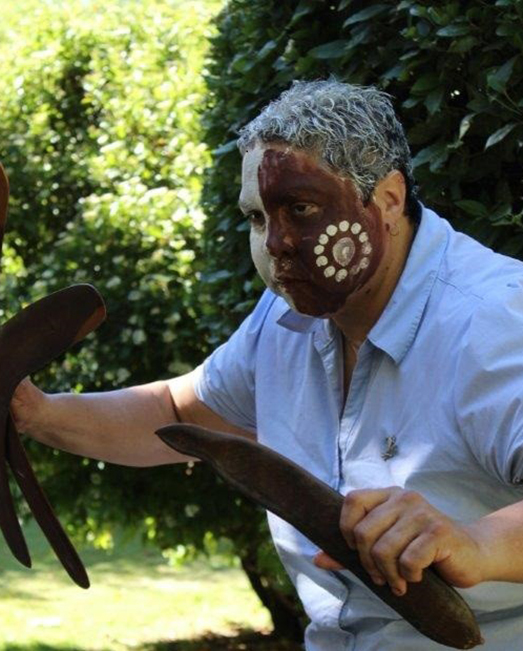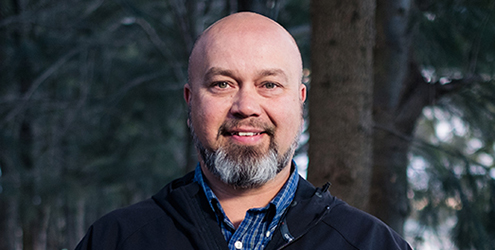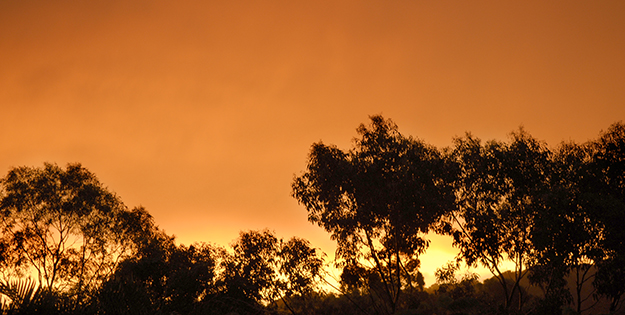Community
Copyright@ Australian Catholic University 1998-2025 | ABN 15 050 192 660 CRICOS registered provider: 00004G | PRV12008
Copyright@ Australian Catholic University 1998-2025 | ABN 15 050 192 660 CRICOS registered provider: 00004G | PRV12008

Theresa Ardler is a deeply spiritual person; one who combines her Aboriginal beliefs with her Catholic faith by seeing synergies in the ways both religions draw on elements of nature — water, fire and wind — in their rituals.
“In Catholicism, we have fire in confirmation symbolising the Holy Spirit, and we have water in baptism, and wind in Pentecost,” says Theresa, a Gweagal woman who holds a Master of Religious Education from ACU.
“These elements of the natural world are also of great importance in Aboriginal spirituality, which is my being and my identity, and I’m deeply connected to all the tradition, knowledge and teachings that have come from that.”
Raised in the Wreck Bay Aboriginal community on the NSW south coast, Theresa spent her childhood immersed in the culture of her father’s ancestral home, with the Wandandian people of the Yuin nation. She comes from a long line of storytellers: women who exposed her to rich creation stories from the Dreaming that emphasise a connection to the land and the ocean.
“We believe that everything is connected, that people, plants, animals, landforms and our ocean and sea life have a spirit, and that links back to our totems and our responsibility to look after country,” she says.
“With my people, we are coastal people, and we believe we come from our first ancestors, which we call the murrungbunguttas. We came from the ocean onto the land, and we see the land as our mother, as part of us. We care for her and she nourishes us, and whatever she produces — the plants and the animals — is interconnected. We are all one under her umbrella.”
Spirituality and belief therefore provide Aboriginal people with guidance on how to interact with their environment, as is described in historian Bill Gammage’s groundbreaking book, The Biggest Estate on Earth.
“The Dreaming has two rules: obey the Law, and leave the world as you found it — not better or worse, for God judges that, but the same,” Gammage writes.
“This broaches a key truth about the Dreaming. In its notions of time and soul, its demand to leave the world as found … the Dreaming is saturated with environmental consciousness. Theology and ecology are fused.”
In recent years there’s been increasing interest in customary Indigenous environmental practices: a field known in the academic world as “traditional ecological knowledge”.
Researchers from many countries are studying the potential of combining Indigenous know-how with Western science, to enhance our understanding of ecological processes.
Aboriginal water expert Bradley Moggridge, an ACU graduate and Kamilaroi man, is one of those researchers. He’s a hydrogeologist who employs both science and Indigenous water management to find sustainable solutions for Australia, the world’s driest habitable continent.
“This is me doing my bit for my ancestors,” he told Impact.

Bradley Moggridge
“They managed the landscape for thousands and thousands of years sustainably and we don’t have the same concept of water management at the moment. My drive is to change that.”
Bradley believes it’s time modern Australia tapped into the wisdom of Aboriginal knowledge to deal with long-term issues such as prolonged drought and water scarcity in the Murray-Darling basin.
"We’ve got a very, very old culture that knows this dry continent, and [that knowledge] is not being used at the moment,” says Bradley, who comes from northwest NSW, in the heart of the river catchment.
“My aim is to try and influence how we manage water with old knowledge, and based on that knowledge, I believe we’ll get better outcomes.”
The unprecedented bushfires of 2019 and early 2020 have also prompted discussion about traditional cultural burning, better known as “fire-stick farming” — a term coined by archaeologist Rhys Jones to describe the traditional use of controlled burns to manage the landscape.
Unlike modern hazard reduction burns, which are often done by air and occasionally result in widespread fires, Aboriginal people used a softer, slower technique that involved wielding a smouldering stick through bushland.
Both Western scientists and Indigenous fire managers recommend regional fire authorities consider employing this traditional method.
“People are looking for solutions,” Firesticks Alliance Indigenous Corporation’s Oliver Costello told the ABC, “and they are turning back to land management techniques used for tens of thousands of years.”
Traditionally, cultural burning was about more than preventing bushfires; it was also used to attract animals for hunting and make the land more productive.

“As the term fire-stick farming suggests, the Aboriginal use of fire resembled agriculture in some ways,” writes author and scientist Tim Flannery in Here on Earth. “It yielded certain crops at certain times, suppressed weeds and was carefully controlled.”
But nowadays, Aboriginal fire practitioners are rarely able to use these old techniques, due to tight local and state government regulations and a lack of resources.
In The Biggest Estate, Bill Gammage notes that prior to 1788, Aboriginal people had no choice but to prevent widespread wildfires.
“Any uncontrolled fire menaced: a day’s fire might eat a year’s food,” Gammage writes. “Detailed local knowledge was crucial. Each family cared for its own ground, and knew not merely which species fire or no fire might affect, but which individual plant and animal, and their totem and Dreaming links.”
Beyond water and fire management, Aboriginal and Torres Strait Islander people have managed a range of resources and ecological systems through close observation of nature.
Over thousands of years, they studied changes in flora, fauna and climate to gain an intricate understanding of local weather patterns, formulating seasonal descriptions that differ from our four-season Gregorian calendar.
The Bureau of Meteorology has published many of these on its Indigenous Weather Knowledge website, as a way of utilising traditional ecological knowledge.
The calendars, from some 16 different clans across the country, are diverse. Some groups, like the Walabuunba people of the Northern Territory, only chart a hot and a dry period, while others, like those living in Dharawal country, from Sydney down to the Shoalhaven, describe six seasons.
“My nan used to say that you can tell the end of the season is coming because there’s a big wind gust that precedes it, or in another part of the year it’s the big rainstorm that comes to wash out the old season and bring in the new,” says Theresa Ardler, who was born on her mother’s ancestral land in Sydney’s Eora nation.
“So, in many cases it’s the winds that tell us the story of how our seasons change, and this understanding of nature and embrace of the natural environment is a special part of Aboriginal culture and spirituality.”
For Theresa, the knowledge passed down by her elders helps to guide both her spiritual life and the way she carries herself in the physical world.
“Our stories tend to be linked with saltwater, our land and our country, and our spirituality embraces those natural elements and helps us to understand what behaviour is appropriate when we are on country, what we can and can’t collect when we walk through the bush, and how we need to share that land with other animals and people that are on it,” she says.
“These stories also give us useful information about the land and the ocean. We are a fishing community, and we watch the land and how it changes, and that tells us things: when we see different flora like the coastal wattle blooming, we know that means certain fish are running, the mullet and whiting and other species.”
Theresa currently runs programs teaching educators about the richness of Aboriginal culture. She believes a greater knowledge of Indigenous customs and spirituality would lead to improved cultural dialogue.
“If more non-Indigenous people had a better understanding of our practices, our customs and how and why we do certain things, I think that would be fantastic,” she says.
“I have a strong belief that it would benefit everyone, and really help us to move forward as a nation.”
Theresa Ardler is the Director of Gweagal Cultural Connections, a business that educates school and university communities about the richness of Aboriginal culture and spirituality. She holds a Master of Religious Education and a Bachelor of Education from ACU.
Want to study education at ACU? Explore the options.
Copyright@ Australian Catholic University 1998-2025 | ABN 15 050 192 660 CRICOS registered provider: 00004G | PRV12008